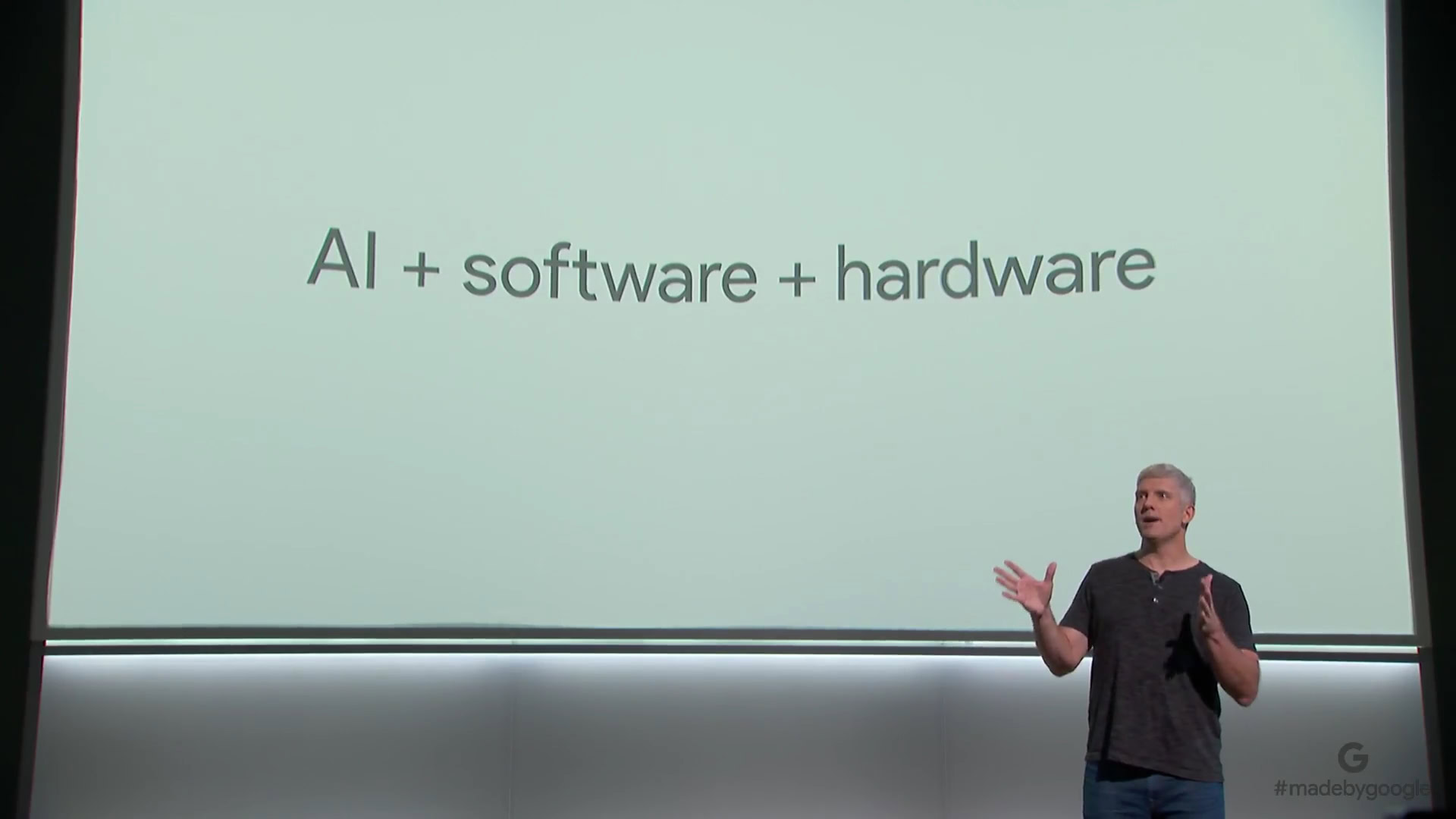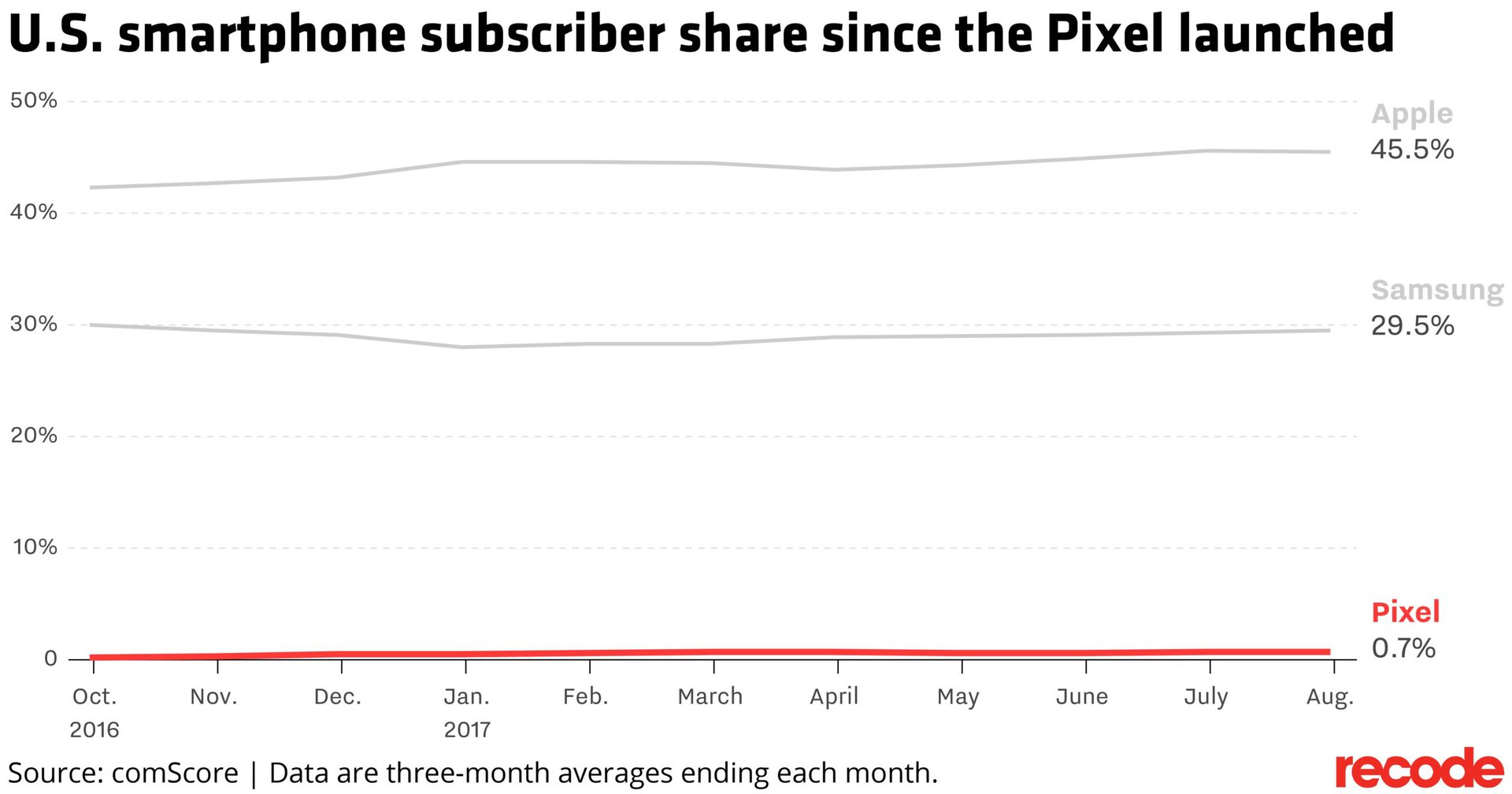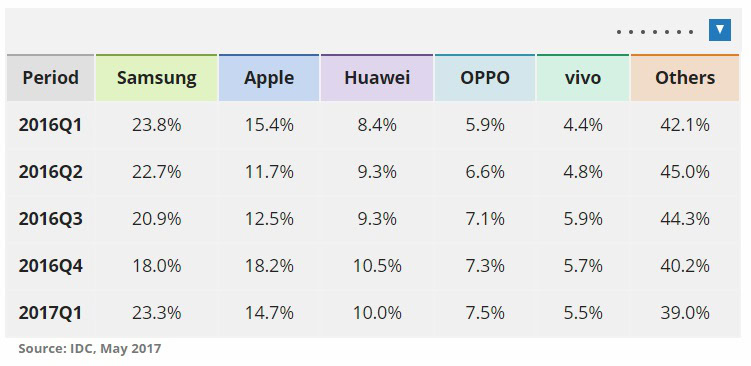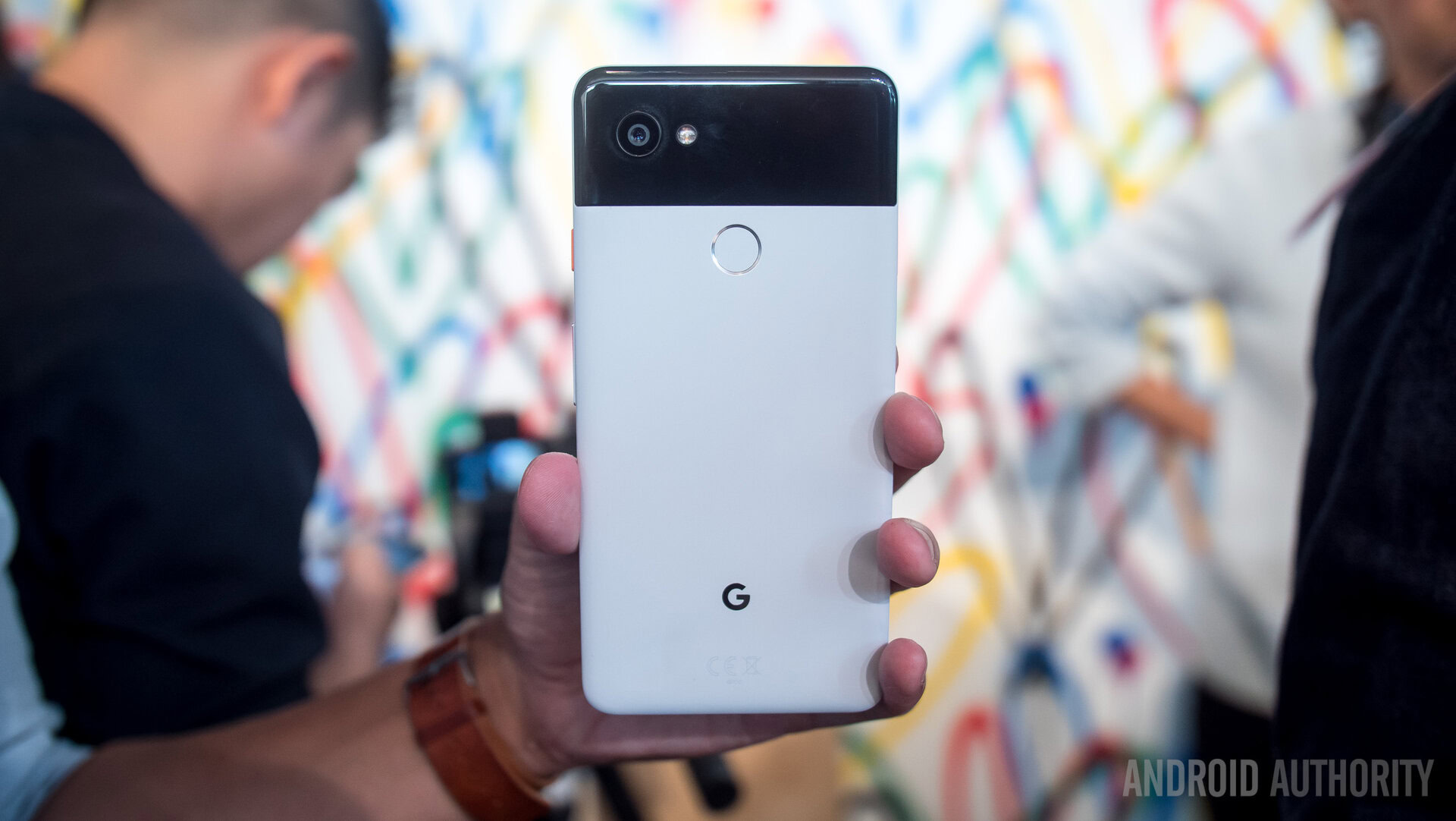Affiliate links on Android Authority may earn us a commission. Learn more.
Google still doesn't want to sell smartphones: Here's why

For a company that now touts the virtues of closely-integrated AI, software, and hardware, Google’s mobile platform started out pretty unintegrated.
Beginning with the first Android phone, the 2008 T-Mobile G1, Google was happy to give manufacturers (and even carriers) ample control over user experience. In hindsight it seems a bit suicidal, but it worked. A decade later, Android is everywhere.
But the times, they are a’changin’. Google’s strategy of spreading Android far and wide is approaching its limits. More importantly, the company is no longer mobile-first; it’s now an AI-first company. And good AI — the kind that’s indistinguishable from magic — requires tight integration with hardware, software, and services. That’s why Google is now making its own line of devices it controls top to bottom.
Enter the Pixel 2 and Pixel 2 XL, two amazing phones Google doesn’t actually want to sell in meaningfully large numbers.
Google cannot be this bad at selling phones
Google hasn’t sold enough original Pixels to move the needle
Google is arguably the biggest and most influential company in the world. It employs tens of thousands of brilliant people who work on solving insanely complicated problems. Selling smartphones is not insanely complicated, so why is Google so bad at it?
Even by the most optimistic guesses, Google hasn’t sold enough original Pixels to move the needle. According to comScore data from August, just 0.7 percent of US smartphone subscribers use a Pixel. The graphic below speaks volumes.

You could say that 0.7 percent (or a few million units) is still respectable for a device’s first year on the market, but this is Google, not OnePlus. And it looks like the second year on the market won’t be much different, either.
Sales of the Pixel 2 and Pixel 2 XL are held back by the same issues that hampered the first generation of “Made by Google” smartphones:
- They are expensive, especially considering that Google doesn’t need a big profit margin to sustain itself like most Android OEMs. Also, the Pixels’ pricing runs against Google’s mission statement to bring Android to billions of new users in developing countries, at least philosophically.
- Domestic availability is limited. Looking at the Google Store, many versions are out of stock or shipping with delays of 3-5 weeks. Availability may be better than last year, but that’s a very low bar. Additionally, the Pixel are still only available at Verizon. Surely, Google had the clout to make deals with more carriers if it wanted to?
- International availability is very limited. This is a perennial problem with Google products and services. The company seems to think most markets are simply not worth the hassle.
- Their hardware barely stands out. There’s no headphone jack (don’t even bring up microSD). There’s no striking hardware feature and the design of the Pixel 2 is dated. Is this the best product Google could come up with?
All of these issues are the result of calculated decisions by Google. You could come up with reasonable explanations for each of them, but it’s hard to believe that Google couldn’t do a better job selling phones.
This is no hobby
If we accept that Google is not grossly incompetent at selling smartphones, the only reasonable explanation remaining is that Google doesn’t want to sell smartphones in high volumes. But why?
Is hardware just a “hobby” for Google? That’s hard to believe. Both Google CEO Sundar Pichai and head of hardware Rick Osterloh have stated the company is serious about hardware, which they hope to turn into a meaningful revenue source within five years. Google made close to $90 billion in revenue in 2016, so when we say meaningful we’re talking about tens of millions of units sold.
Is hardware just a “hobby” for Google? That’s hard to believe.
Some embarrassing failures aside, Google has already taken some steps that suggest it actually is serious about hardware. It set up a unified hardware operation (under Osterloh, former head of Motorola); it acquired a large part of HTC’s engineering team; and it poured money into TV ads and other marketing activities. Its hardware-related message in the past two years has been remarkably consistent, which is a bit unusual for a company known for flip-flopping in other areas.
With friends like these…
Why is Google pouring money into smartphones, but deliberately holding back when it comes to selling them? For a clue, we can take a look at a recent survey of global market share by IDC.

Out of the top five smartphone sellers right now, Google has no one on which to rely for achieving its vision of “AI + software + hardware.” Leaving out Apple for obvious reasons, we’re left with:
- Samsung – A hugely resourceful and rich company. It has ample control over the way people experience Android and seems to desire ridding itself of Google’s control.
- HUAWEI – Samsung 2.0 in the making.
- OPPO and vivo – They’re owned by the same corporation (BBK Electronics) and focused on China and developing markets; these two players care about high volumes only. That means a focus on iPhone-like designs and increasingly extreme beautification modes, rather than AI and tight integration with Google.
Together, Samsung, HUAWEI, and BBK account for almost half of all Android smartphones sold right now. Google can’t count on any of them in the long term.
LG, Xiaomi, and a few others have a shot at entering top five, but when you lose money quarter after quarter, you’re in no position to shape the ecosystem. Everyone else is too small to count.
Together, Samsung, HUAWEI, and BBK account for almost half of all Android smartphones sold right now. Google can’t count on any of them in the long term.
Now is not the moment
Put yourself in Sundar Pichai’s shoes for a moment. You know that smartphones have reached a plateau and all the big improvements will come from AI going forward. You need to find ways to put AI at the heart of every smartphone. Here’s the problem: you can’t trust your most successful partners, and the small ones are barely making ends meet.
So, what do you do? You start making your own smartphones and try not to destroy everything that you’ve built so far.

Google created its own smartphone lineup to further its greater agenda. The Pixel line pushes less cooperative OEMs, and inspires friendly ones, to follow its path by shaping the public perception of what Android smartphones should be. If all else fails, Google could even go nuclear and tackle Apple and Samsung head-on.
Google definitely needs to be a competitive smartphone maker, but it doesn’t need (or want) to be a competitive smartphone seller — at least not for now.
Google doesn’t want to anger or alienate Samsung even more. It happened before with the Motorola acquisition. In 2014, Google was reportedly so “dismayed” with Samsung’s efforts to alter the Android experience, that the two companies had to sit down for peace talks. Soon after, Google offloaded Motorola to Lenovo. Not much has changed since then. Samsung has lost some market share, but it’s still the most influential Android phone maker out there. Its homegrown Tizen OS is ready and waiting.
Selling smartphones is a means, not an end.
Google also doesn’t want to weaken the platform it worked so hard to create and maintain. With so many Android OEMs already struggling to make money, the arrival of a strong new player could precipitate a wave of exits and consolidation. This could give Samsung and HUAWEI a stronger bargaining position and Apple even more market share.
Selling smartphones is a means, not an end. Google won’t turn itself into a high-volume smartphone maker if it can be avoided. It’s a complicated, labor-intensive, and highly competitive industry that’s spiraling into commoditization. What Google really wants is to keep doing what’s worked so well until now: control the platform and let others worry about supply chains.

Five years from now
Speak softly and carry a big stick, says the old adage. The Pixel line is the stick that Google will use when all else fails, at the risk of damaging a platform that was built over a decade of soft speaking.
The beauty of the stick is you don’t need to use it, you just need to be seen carrying it around. Google doesn’t need to sell a bunch of Pixels in order to make a point. But that doesn’t mean it won’t, if it comes down to it.
Google doesn’t need to sell a bunch of Pixels in order to make a point. But that doesn’t mean it won’t, if it comes down to it.
The worst-case scenario for Google is to become a “real” smartphone maker who competes in earnest not only with Apple, but also with Samsung, HUAWEI, and all the other Android OEMs. If that happens, the next five years could be very turbulent in the Android world. A conflict with Samsung would be inevitable, as the Korean giant would fight back against Google’s encroachment on its hardware turf. The entire ecosystem could become less diverse, as small players get bought out or simply shut down. Competitors like Amazon or Microsoft could try to swoop back in and offer a tempting alternative to Google’s mobile and AI platforms.
In the best-case scenario, the current model is perpetuated. That means Google manages to convince OEMs to follow its lead and work diligently to add Google-powered AI to all of their products. If that happens, I doubt Pixel phones will even be a thing five years from now. At best, they’ll be a boutique brand kept alive just to remind OEMs that Google is always capable of taking things into its own hands.
Whether Google becomes a mass-market smartphone maker or not, one thing is clear – Google is dead serious about becoming the preeminent AI company, even if that means undermining Android in the process.